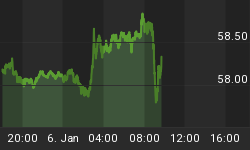Today, short-term interest rates are set by the diktats of the central bank. And long-term interest rates are set in a "market" in which the central bank is obliged to keep coming back to buy ever more bonds, and speculators front-run the central banks to buy ahead of them. The result has been that, for 30 years and counting, the bond price has been rising, which is the same as to say that the rate of interest has been spiraling into the black hole of zero. When it gets there (and probably sooner) the entire monetary system will collapse.
This is the terminal stage of the disease of irredeemable paper currency. They have banished money (gold) from the monetary system, and the result is a positive-feedback-loop that destabilizes the rate of interest. The rate of interest has a propensity to fall, just like the value of the paper currency itself.
This leads to the question of how interest rates are set by a free market under a gold standard. This is a non-trivial question, and the answer is profoundly important as we debate what sort of role gold ought to play and evaluate the various gold standards being proposed.
If people are free to own gold coins directly, then the mechanics of setting the rate of interest are simple. Let's define a term. The marginal saver is the saver who could go either way, either holding a bond or a gold coin. If the rate of interest ticks downward, he will sell the bond (or withdraw his money from the bank, thus forcing the bank to sell the bond) and buy the gold coin. He would rather hold the gold than commit to the time and risk for such a low interest rate. If the rate of interest ticks upward, he will buy the bond (or deposit his coin in the bank).
The marginal saver sets the floor under the rate of interest. It cannot fall below his preference or else he will vote with his gold. His preference has real teeth (unlike today).
Now let's define one more term. The marginal entrepreneur is the entrepreneur whose rate of profit is the lowest possible, while still being viable. If his profit falls for any reason, such as due to a rise in costs, he will shut down his enterprise. One cost is the cost of capital, i.e. the rate of interest. No entrepreneur can borrow at a rate higher than his rate of profit, and the marginal entrepreneur is the first to buy the bond and sell his capital stock at an uptick in the rate of interest. He is the first to sell a bond and buy capital stock at a downtick in the rate.
The marginal entrepreneur sets the ceiling over the rate of interest. It cannot rise above his ability to pay, or else he will vote with his capital stock. He also has teeth.
Under a proper gold standard, the rate of interest is kept in a band that is not only narrow, but which is also stable over long periods of time. This is the principle virtue of the gold standard. It does not fix the level of prices, which would be neither possible nor desirable. It keeps the rate of interest consistent, which serves the interests of wage earners, pensioners, and other savers, and of entrepreneurs whose work provides the goods, services, jobs, and interest payments that on which everyone else depends (and which they take for granted).
When evaluating any proposed gold standard, one should ask the question: how will it determine the rate of interest?
















